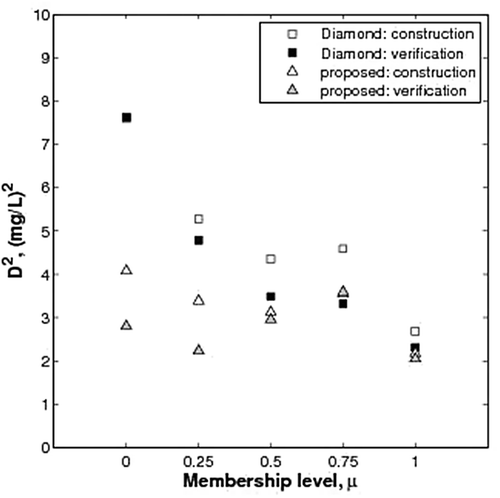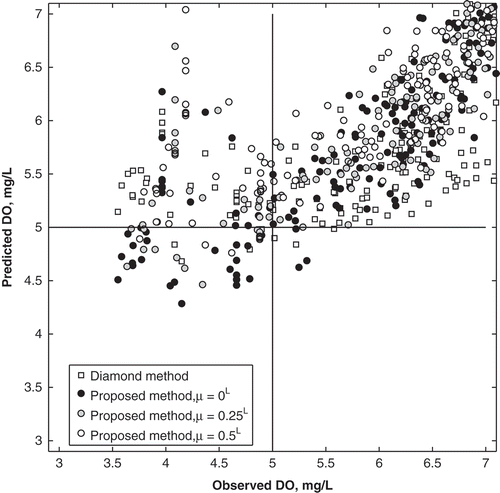Figures & data
Fig. 1 Aerial view of the City of Calgary, highlighting the Bow River, the Water Survey of Canada (WSC) monitoring station, and the Bonnybrook (BB), Fish Creek (FC) and Pine Creek (PC) wastewater treatment plants.

Fig. 2 Daily observations of DO concentration, water temperature, T, and discharge, Q, in the Bow River for the ice-free period (May–November) in 2008. Note that DO and T data were collected every 15 min, while Q data were collected hourly.
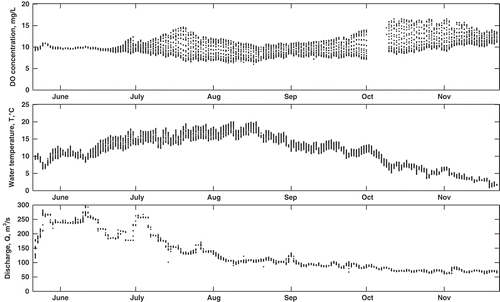
Fig. 3 Comparison of T, Q and DO observations on 12 September 2006 and their transformations into fuzzy numbers. Note that on the right column, the symbols correspond to µ = 0, 0.25, 0.50, 0.75 and 1, i.e. the selected membership levels used for this research.
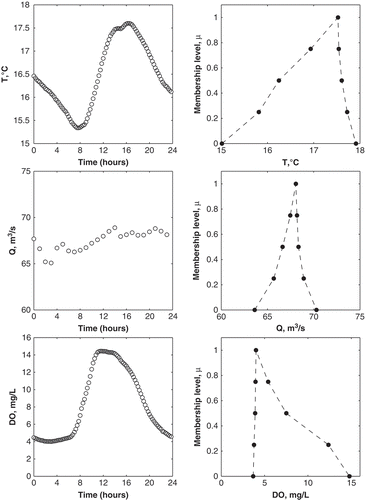
Fig. 4 Comparison of the values of the three regression coefficients calculated using the Tanaka method (top), the Diamond method (middle) and the proposed method (bottom).
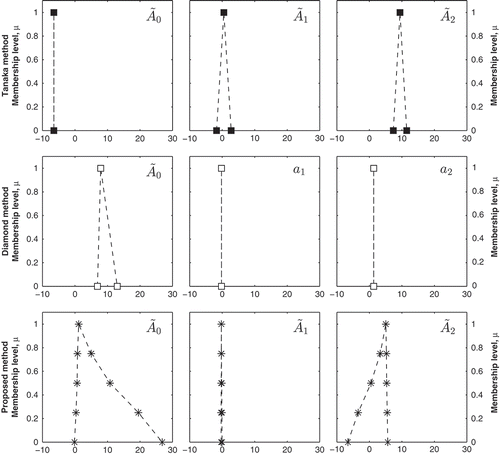
Fig. 5 Comparison of observed and predicted DÕ for model construction (2006 data), using (a) the Tanaka method, (b) the Diamond method, and (c) the proposed method. Observed data (black circles) correspond to µ = 0L and 0R, while the predicted data are shown for µ = 0L and 0R (black crosses) and µ = 1 (white circles).
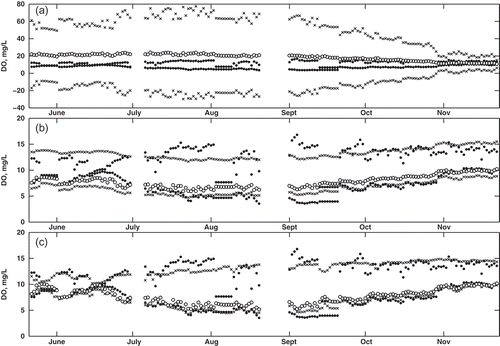
Fig. 6 Comparison of observed and predicted DÕ for model construction (2007 data), using (a) the Tanaka method, (b) the Diamond method, and (c) the proposed method. Observed data (black circles) correspond to µ = 0L and 0R, while the predicted data are shown for µ = 0L and 0R (black crosses) and µ = 1 (white circles).
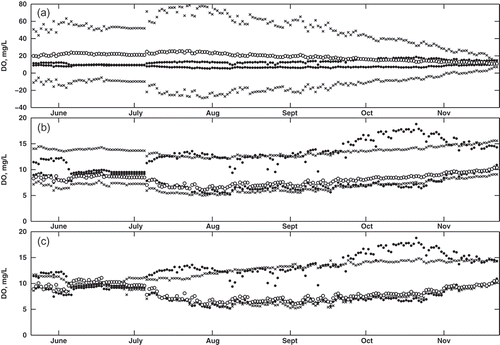
Fig. 7 Comparison of observed and predicted DÕ for model validation (2008 data), using (a) the Tanaka method, (b) the Diamond method, and (c) the proposed method. Observed data (black circles) correspond to µ = 0L and 0R, while the predicted data are shown for µ = 0L and 0R (black crosses) and µ = 1 (white circles).
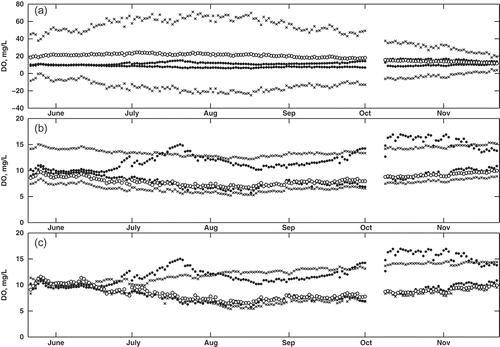
Fig. 8 Comparison of observed and predicted DÕ, for the construction and verification datasets: (a) and (d) the Tanaka method, (b) and (e) the Diamond method, and (c) and (f) the proposed method. Note that each plot includes values at all membership levels.
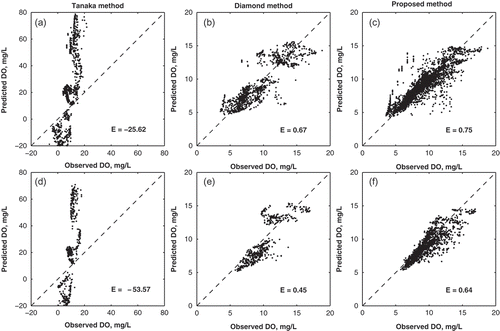
Fig. 9 Comparison of (a) Nash-Sutcliffe coefficient and (b) RMSE for the Diamond and proposed methods, calculated at µ = 0, 0.25, 0.50, 0.75 and 1.
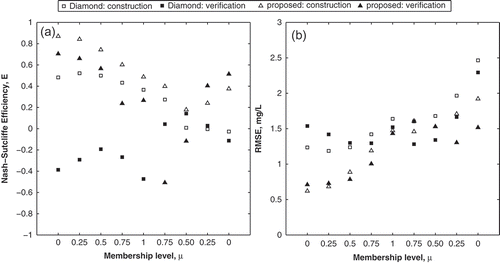
Table 1 Summary of model performance criteria for each method.
Fig. 10 Comparison of d2 for the Diamond and proposed methods calculated at µ = 0, 0.25, 0.50, 0.75 and 1.
